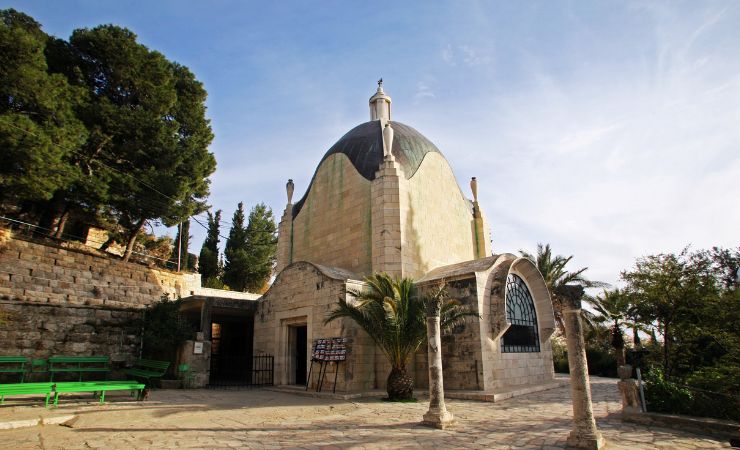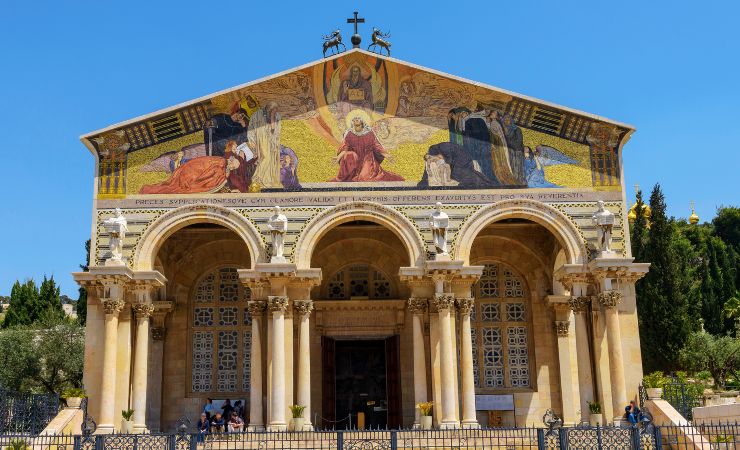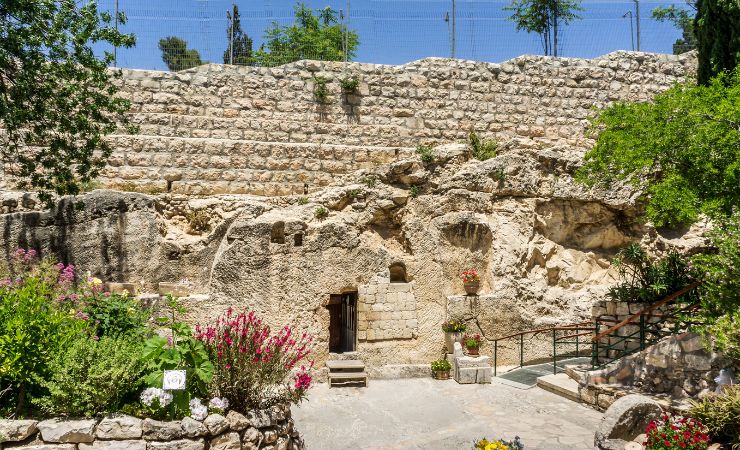St. George’s Church in Lod (Lydda): Where Legend Rests
Located in Lod (Lydda) , St. George’s Church is a Greek Orthodox site that is revered by Christians around the world as the traditional burial place of St. George, the dragon-slaying saint whose story has inspired millions.
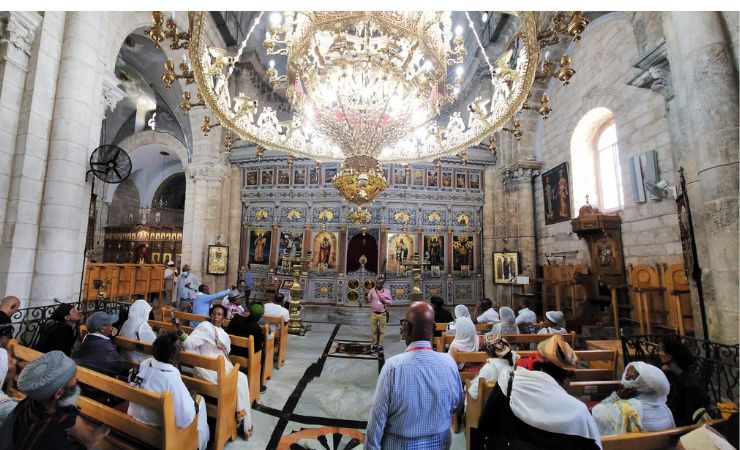
Location
St. George’s Church is located in Lod, central Israel, about 20 kilometers southeast of Tel Aviv and just minutes from Ben Gurion Airport.
Who is St. George?
St. George was a Roman soldier and Christian martyr, believed to have been born in Cappadocia (modern-day Turkey) in the late 3rd century CE. His refusal to renounce his Christian faith during the persecution under Emperor Diocletian led to his brutal execution around 303 CE.
While facts about his life are scarce, his legend exploded in popularity across the Christian world — especially after the Crusades. He became the patron saint of countries including England, Georgia, and Ethiopia, and is widely venerated in Eastern Christianity, Catholicism, and even Islam (where he is known as Al-Khidr in some traditions).
The most enduring story associated with him is the slaying of a dragon, a symbolic narrative of good triumphing over evil. But in Lod, the focus is on the man, not the myth — a real believer who paid the ultimate price for his faith.



St. Geroge's Church History
St. George’s Church in Lod, Israel, stands as a testament to centuries of religious devotion and architectural evolution, reflecting the city’s rich and complex history.
Byzantine Period (5th–7th Centuries)
The origins of the church trace back to the Byzantine era, specifically between the 5th and 7th centuries. During this period, a basilica was constructed in Lod, traditionally identified as the birthplace of St. George. This basilica was characterized by a three-aisled design, each aisle terminating in semi-circular apses. Adjacent to the main basilica, a smaller church was situated to the southwest. This complex served as a significant pilgrimage site, attracting Christians venerating St. George. However, in 614 CE, the church suffered destruction during the Sasanian invasion, which led to the Persian conquest of Jerusalem.
Crusader Period (12th Century)
Centuries later, during the 12th century, Crusaders reconstructed the church on the original Byzantine foundations. The new structure mirrored the basilica’s initial dimensions, measuring approximately 47 meters in length and 24 meters in width. This iteration featured three aisles ending in semi-circular apses, with the second of five bays forming the transept. The church also functioned as a fortified refuge; notably, in 1177, during an attack by Saladin’s forces, inhabitants sought shelter on its stone roof. However, following the Battle of Hattin in 1187, Saladin ordered the demolition of the cathedral in 1191. Despite this, the eastern section of the church, housing the choir and the tomb of St. George, remained in use by the Greek Orthodox community.
Mamluk Period (13th–15th Centuries)
Under Mamluk rule, the western ruins of the Crusader church were repurposed into a congregational mosque, with the earliest mention of this transformation dating to the early 15th century. The mosque’s prayer hall incorporated remnants of the smaller Byzantine basilica, including its apse. A pillar from the original nave, inscribed in Greek, still stands within the mosque. The mosque’s northern façade utilizes the southern wall of the Crusader church, and its vaulted ceiling is cross-shaped. Beneath the mosque lie underground halls, originally built by the Crusaders as reservoirs for the church and local residents.
Ottoman Period (19th Century)
In the latter half of the 19th century, the Greek Orthodox Patriarchate of Jerusalem obtained permission from Ottoman authorities to reconstruct the church. The current structure, completed in 1872, was built over the remains of the 12th-century Crusader church, specifically occupying the east end of its nave and northern aisle. This reconstruction incorporated surviving architectural elements, such as the apses. The church’s crypt houses a sarcophagus venerated as the symbolic tomb of St. George, continuing its legacy as a pilgrimage destination.
Throughout these periods, St. George’s Church has endured cycles of destruction and restoration, symbolizing resilience and the enduring significance of sacred spaces in the region’s cultural and religious landscape.
Inside the Church
Architectural Features of the Current St. George’s Church
St. George’s Church in Lod, as it stands today, is a testament to the enduring legacy of sacred architecture, reflecting layers of historical significance and architectural evolution. The present structure, completed in 1872 under the auspices of the Greek Orthodox Patriarchate, was meticulously constructed over the remnants of the 12th-century Crusader church, seamlessly integrating elements from previous eras.
Structural Layout and Design
The church exhibits a traditional basilica layout, characterized by a single nave flanked by side aisles, culminating in a semi-circular apse at the eastern end. This design facilitates a focused liturgical space, directing attention toward the altar, which is central to Orthodox worship practices. The incorporation of surviving architectural elements from the Crusader period, such as portions of the original apses, not only preserves historical continuity but also enriches the aesthetic and spiritual ambiance of the church.
Interior Appointments
Upon entering, visitors are greeted by an interior that harmoniously blends historical reverence with spiritual symbolism. The walls are adorned with traditional Byzantine-style frescoes and icons, depicting various saints and biblical narratives, rendered in vibrant hues that have been meticulously maintained or restored over the years. These artistic elements serve both decorative and didactic purposes, guiding the faithful in contemplation and reflection.Wikipedia
The flooring, composed of polished stone, complements the overall aesthetic, providing a sense of continuity and grounding. Natural light filters through strategically placed windows, casting a serene glow that enhances the contemplative atmosphere within the sacred space.
Adjacent Structures and Integration
Notably, the church complex is situated in close proximity to the Great Mosque of Lod, a juxtaposition that underscores the city’s rich tapestry of religious and cultural history. The coexistence of these two significant religious structures serves as a testament to the enduring legacy of Lod as a crossroads of faiths and civilizations.
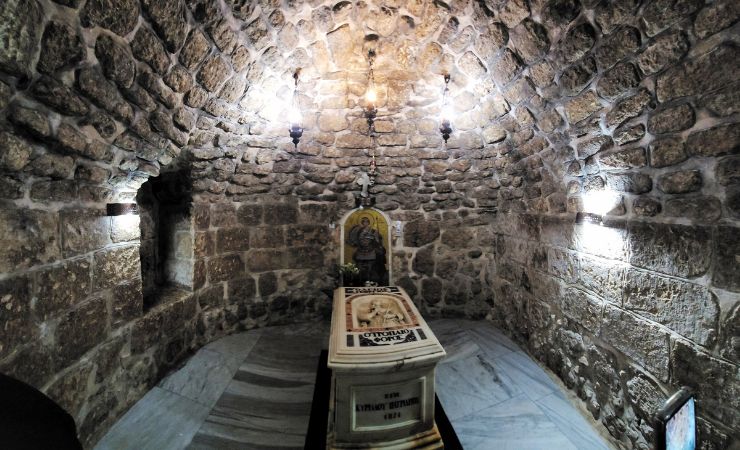
The Tomb of St. George
The most sacred part of the church is the crypt beneath the apse, which contains a marble sarcophagus believed to be the symbolic tomb of St. George.
The tomb is marked with an inscription in Greek: ὁ Ἅγιος Γεώργιος ὁ τροπαιοφόρος (“Saint George the Trophy-Bearer”).
The area is often surrounded by candles, incense, and offerings, as pilgrims pray and seek healing.
According to the Greek Orthodox tradition, this is where his body was brought and buried after his martyrdom.
“Visitors will often anoint themselves with oil, light candles, or simply rest their hand on the tomb in silence — a moment of deep connection with the saint’s legacy.”
The Chains of St. George
Near the church’s entrance, there is a glass case displaying iron chains that, according to tradition, were used to bind St. George during his imprisonment.
These chains are considered sacred relics and are believed to have healing powers.
Some pilgrims gently place them on parts of their body while praying for health or strength.
Sources and Additional Information
Nearby Sites
- Great Mosque of Lod – Once part of the Crusader church, it retains historical architectural elements and reflects the layered religious history of the city.
- Lod Mosaic Archaeological Center – Home to one of Israel’s most stunning Roman mosaics, with rich animal and marine imagery.
- British Military Cemetery (Lod War Cemetery) – A beautifully maintained cemetery with graves of soldiers from WWI and WWII.
- White Tower of Ramla – A 30-meter minaret from the Mamluk era offering panoramic views and a taste of nearby Ramla’s medieval history.

